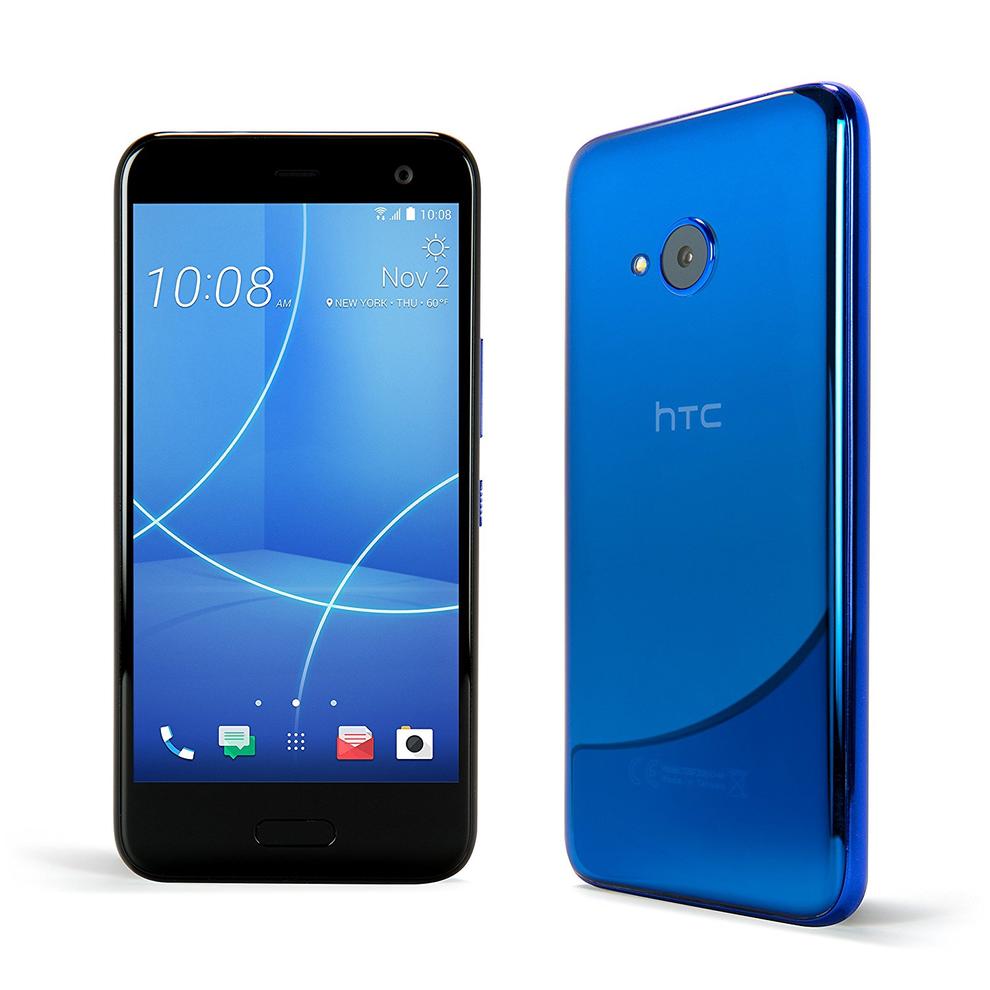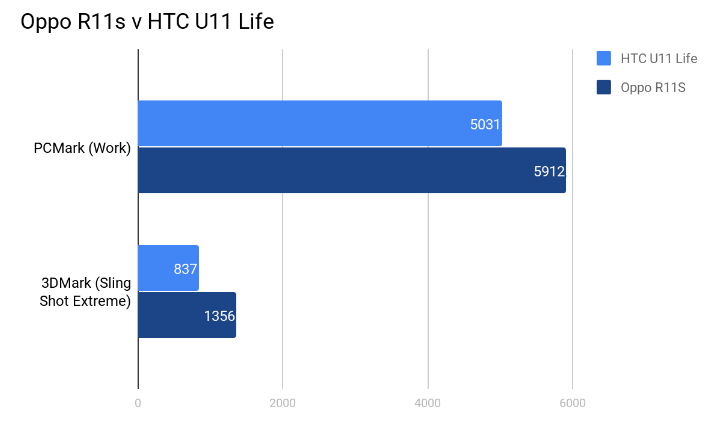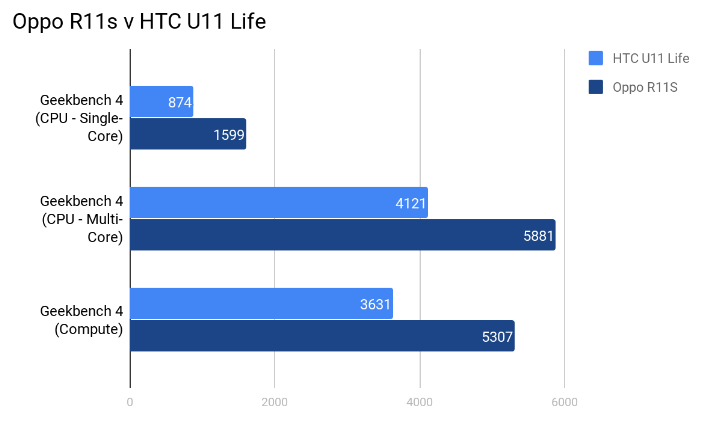Smartphone Smackdown: Oppo R11s v HTC U11 Life
- 17 April, 2018 09:34

Introductions
The R11s is Oppo’s refreshed version of last year’s flagship R11. Along with a sharp dual-lens camera and a sub-$700, it’s also brings a bigger FullVision display and facial recognition tech to the table.
Then, the HTC U11 Life is mid-tier refresh of the last year’s flagship U11. It’s the cheapest smartphone with squeezable Edge Sense technology around and it comes IP67-rated against water damage and the first Android One handset available in Australia.
Which is the better buy?
Hardware
|
| Oppo R11s | HTC U11 Life |
Display Size | 6-inch | 5.20-inch |
Display Type | AMOLED | Super LCD |
Display Resolution | FHD+ (1920×1080) | FHD+ (1920x1080) |
Processor | Qualcomm Snapdragon 660 | Qualcomm Snapdragon 630 |
RAM | 4GB | 4GB |
Battery | 3200mAh | 2700mAh |
On-Board Storage | 64GB | 64GB |
MicroSD? | Yes | Yes |
Headphone Jack? | Yes | No |
Waterproofing? | None | IP67 |
Weight | 153g | 142g |
Dual SIM? | Yes | No |
Price | $649 | $599 |
Connectivity | Wi-Fi (802.11), Cat 6 LTE and Bluetooth (4.2) | NFC, MST, Bluetooth 5.0, Wi-Fi (802.11ac), Cat 9 LTE |
Software
In terms of software, both these devices run Google’s Android OS. However, that’s not to say there aren’t a few differences.
The Oppo R11s puts their own spin on Android 7.1.1 (AKA Nougat) via their own ColorOS skin. In terms of the differences between this and stock Android, ColorOS is designed to imitate or at least evoke Apple’s iOS platform. Everything has a friendly look and feel to it - which can be appealing to certain users. However, partially by design, this approach does remove some of the user controls and extra customizability you usually get out of the Android OS.
 Credit: HTC
Credit: HTC Meanwhile, HTC have gone for the complete opposite. The HTC U11 Life is part of the Android One program. This means that, out of the box, it runs pretty much as close to stock Android as you can get. The only real exceptions here relate to the camera app and anything to do with the U11 Life’s Edge Sense feature and their USonic noise-cancelling earbuds.
Winner: HTC U11 Life
Both the everyday software experience and the perks afforded to it by the Android One program (guaranteed regular security updates and OS upgrades) make the HTC U11 Life a favorite on this particular front. ColorOS isn’t bad - but it’s hard to beat Android as it was intended.
Performance
While your everyday performance with both of these devices is - inevitably - going to vary based on how many apps, what those apps are, how you configure the brightness on the screen and whether or not you make use of the array of battery-saver options - which can affect performance as a side-effect.
The most straightforward way to compare the two smartphones is to use benchmarks.
3D Mark / PC Mark
 Credit: Fergus Halliday | IDG
Credit: Fergus Halliday | IDG GeekBench
 Credit: Fergus Halliday | IDG
Credit: Fergus Halliday | IDG Winner: Oppo R11s
Courtesy of a beefier Snapdragon processor, Oppo’s R11s wins the performance front hands-down. Pretty much across the board, it outperformed the U11 Life.
Camera
In terms of specs, the HTC U11 Life’s main camera features a 16-megapixel sensor, flash, Phase Detection Autofocus and a HDR Boost feature - which promises to deliver more balanced results by taking multiple shots that measure and combine the darkest shadows with the brightest highlights.
Then, you’ve got the R11s. It’s got a dual 20-and-16-megapixel rear camera with f/1.7 aperture paired up with front-facing one boasting a 20-megapixel sensor and a f/2.0 aperture. This is actually a step down from the R11’s dual 20-megapixel rear-camera kit but otherwise a pretty similar configuration to its most-immediate predecessor.
At A Glance - HTC U11 Life
 Credit: Fergus Halliday | IDG
Credit: Fergus Halliday | IDG At A Glance - Oppo R11s
 Credit: Fergus Halliday | IDG
Credit: Fergus Halliday | IDG Close Up - HTC U11 Life
 Credit: Fergus Halliday | IDG
Credit: Fergus Halliday | IDG Close Up - Oppo R11s
 Credit: Fergus Halliday | IDG
Credit: Fergus Halliday | IDG Winner: HTC U11 Life
Though the big picture landscape shots do seem to favor the R11s, the U11 Life proves itself the victor when it comes to the details. As you can see above, the colors of both the greenery and the buildings come through with much more clarity.
To be fair though, the slight-edge that we'd give the camera on the U11 Life for image quality does have be balanced against its limitations. It's not as good for selfies as the R11s, and also lacks support for portrait / bokeh shots.
The Bottom Line
Whether the Oppo R11s or the HTC U11 Life is the better buy is arguably going to come down to how much you care about the processing power and performance versus everything else. Because aside from that particular front, the HTC U11 Life emerges the victor here. Its leaner form-factor helps make up for a lack of grunt while the solid camera kit and waterproof body further see it narrowly outpace Oppo’s refreshed flagship.
 Credit: HTC
Credit: HTC 




